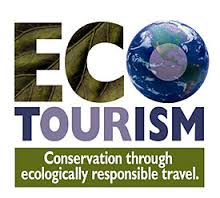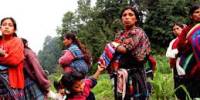INTRODUCTION
Eco-tourism means enjoying the nature without any harming it in any way. Ours Rivers, Sundarbans, Chittagong Hill-tracts, Bandarban, Khagrachari, Rangamati, Kaptai, tea gardens and other some places have been included in eco-tourism. Eco-tourism is in its infancy in our country. Few years ago, govt. agencies and private sector have shown their interest and attention about eco-tourism. Bangladesh is called most advantage playground and darling child of nature. It has a vast budding to develop and promote nature tourism in our country. However, in the context of present global trend, nature and wild life oriented travel represents a major trend in tourism today.
SCENARIO OF ECO-TOURISM SPOTS IN BANGLADESH
Bangladesh contains greater biodiversity than that of many countries taken together. Indeed few countries in the world can match its rich and varied flora and fauna – a biological phenomenon, which simply can be described as unique. This flat alluvial plain criss-crossed by the three mighty river systems in the world– the Padma, the Jamuna and the Meghna and their innumerable tributaries and distributaries – is surely fascinating. Bangladesh is blessed with two of the worlds splendid and enchanting eco-tourism spots of diverse nature – the Sunarbans and the Chittagong Hill Tracts (CHT).In the situation, the old fashioned life style in rural Bangladesh, the rivers, the forested hills, the largest mangrove forest and pollution free sea beaches are awaiting to be converted into highly attractive eco-tourism products. Bangladesh has a fairly large number of virgin eco-tourism spots to offer. Some of these are:
SUNDARBANS
Sundarabans is a goldmine of eco-tourism. The Sundarbans, a cluster of islands with an approximate area of 3,600 square kilometers, is the greatest mangrove forest in the world. It is located about 385 km (Mongla Port) South-west of Dhaka and also located at the southern extremity of the Ganges delta bordering the Bay of Bengal in the southwest of Bangladesh, in the district of greater Khulna. It is the home of the Royal Bengal Tiger and its dense mangrove forests are criss-crossed by a network of rivers and creeks. One finds here tides flowing in two directions in the same creek, often find tigers swimming across a river or huge crocodiles basking in the sun. The variety of the natural mangrove has much to offer to an inquisitive visitor. Land and water meet in many novel ways. The Sundarabans is the natural habitat of the world-famous Bengal tiger, spotted deer, crocodile, jungles fowl, wild boar, lizards, Rhesus monkeys and an innumerable variety of beautiful birds and migratory ducks. For the botanists the love of nature, the poet and the painter, this land provides a variety of wonders. The main attractions of this area for tourists include wildlife photography, viewing and studying the world’s largest mangrove forest, boating, and meeting local fishermen, wood-cutters and honey collectors. Also great importance is the peach and tranquility of the wilderness.
Bangladesh contains greater biodiversity than that of many countries taken together. Indeed few countries in the world can match its rich and varied flora and fauna – a biological phenomenon, which simply can be described as unique. This flat alluvial plain criss-crossed by the three mighty river systems in the world– the Padma, the Jamuna and the Meghna and their innumerable tributaries and distributaries – is surely fascinating. Bangladesh is blessed with two of the worlds splendid and enchanting eco-tourism spots of diverse nature – the Sunarbans and the Chittagong Hill Tracts (CHT).In the situation, the old fashioned life style in rural Bangladesh, the rivers, the forested hills, the largest mangrove forest and pollution free sea beaches are awaiting to be converted into highly attractive eco-tourism products. Bangladesh has a fairly large number of virgin eco-tourism spots to offer. Some of these are:
Exciting activities take place in Dublar Char; which is Small Island in the Sundarabans. In the forest fishermen from Chittagong gather for months (mid-October to February) to catch and dry fish. But the most daring and exciting activity is honey collection. The honey collectors work in groups for just two months (April-May). It is interesting to see how they locate a hive and collect the honey. Further some famous spots include Hiron point (Nilkamal) for observing tiger, deer, monkey, crocodile, birds and natural beauty. Kuakata is another spot for deer, tiger, crocodiles, variety of birds and monkeys, and a morning and evening sympathy of wild fowls. The vast grassy meadow running from Katka to Kachikhali (Tiger point) provides opportunities for wild tracking. Tinkona Island has tiger and deer. In this connection it may be mentioned that Sundaraban has been declared by UNESCO as a cultural heritag
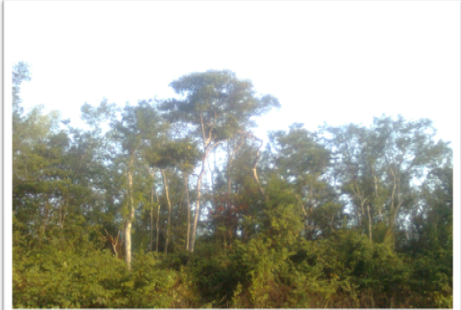
KUAKATA: SEA RESORT
Kuakata is situated on the Bay of Bengal on the southern coast of the country. A rare spellbinding beauty spot on the southernmost tip of Bangladesh in the district of Patuakhali. It has a wide sandy beach from where one can get the unique opportunity of seeing both the sunrise and sunset. This sandy beach has gentle slopes into the Bay of Bengal. Bathing in the sea these is as pleasant as is walking or diving in the beach. Kuakata is truly a virgin beach-a-sanctuary for migratory birds, a series of coconut trees, sandy beach of blue bay, a feast for the eve. The unique customs and costumes of the Rakhaine tribal families and Buddhist Temple of about hundred years are additional attractions.
COX’S BAZAR
It is a tourist capital of our country. Ancient name of Cox’s Bazar was Bakolia. Mid – seventeenths name was „PENGWA. The Rakhaine word „PENGWA means yellow flower. Miles of golden sands, towering cliffs, surfing wares, rare shells, colourful pagodas, Buddhist Temples and tribes, delightful seafood – is Cox’s Bazar. Cox’s Bazar town founded in 1878 A. D. by Captain Hiram Cox of the East India Company is well protected by green clad, jungle slopes on the one side and the seashore on the other side. The total land area of Cox’s Bazar is 2260 square km. It has a mixed population speaking Bangla, local Chittagram language and Burmese. The setters from Arakan have established flourishing cortage industries where they weave colourful silk and cotton materials and make cigars. Its main attraction is its clean sea beach; about 120km unbroken stretch of silvery sand the longest in the world. The beach is overlooked by crescent shaped low green hill range, wild elephants, deer, shambar, birds and jungle fowls abound in the nearly forests. Rakhayne tribe, tribal life and culture, old Buddhist temples, salt production and shrimp cultivation, typical handicrafts and couch shell products, Himchari waterfalls, the Naf River at Teknaf, offshore islands close by viz. Moheshkhali, Ramu, St. Martin, Sonadia, etc. make Cox’s Bazar a unique and exotic spot of Bangladesh. It is one of the most attractive eco-tourism spot in the world. Special attractions for eco- tourism around Cox’s Bazar are mentioned in the following areas:
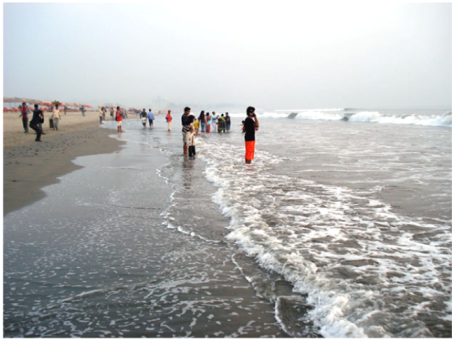
Moheshkhali
Moheshkhali is an island in the Bay in the northwestern direction off Cox’s
Bazar. It is dotted here and there with forested hills with the ancient Adinath Temple in its midst. Fishermens villages and the Rakhaine villages are great attractions of the island.
Ramu
It is a small Buddhist village, 15 km away from Cox’s Bazar. Attractions include ancient Buddhist temple and khyang, Ramkot Boansharam, Tirthdham, rubber gardens, Buddhist locality Red Chin khyang, white Chin khyang, Jhorkhyang.
St. Martin Island Only Coral island is Saint Martin in our country. Its local name is Narikel Jinjira. The main attractions include beaches around the island, coral stones, coconut groves, sea crabs, turtle shells and pearls.
Sonadia
Sonadia is a maiden island off Coxs Bazar across the Bay. Attractions include fishing community, dry fish processing and colonies of the red sea crabs etc.
Teknaf
Teknaf is a romantic old-world border township in the southern tip of Bangladesh territory looking up to the Myanmar high hill ranges across the river Naf. Teknaf is 85km. from Coxs Bazar by road and 120km. by the beach along the sea.
Chittagong
A picture save hinterland of large hill forests and lakes of Chittagong are wonderful holiday spots. Chittagong is the second largest city of Bangladesh and a busy international seaport and airport. Its lush green hills and forests, broad sandy beaches and fine cool climate ideal for holiday seekers. Other attractive include Sultan Bayazid Bostami, Shrine of Hazrat Shah Amanat (R.A.), and Goribullah Shah (R.A.) etc. Moreover Fairy hill, Foys lake, river Karnaphuli, Patenga beach, Fouzdarhat sea beach, Ethnological Museum, and Sitakunda pilgrim of the Hindus etc important cites.
ECO-TOURISM SPOTS OF CHITTAGANG HILL TRACTS
The hill tracts are divided into three districts, namely Rangamati, Khagrachhari and Bandarban. There are many eco-tourism spot in the hill districts. This are-
Rangamati
The picturesque headquarters of Rangamati Hill District, known for its rare scenic beauty and unspoiled tribal life, is just 77 km from Chittagong by road. It is perched on the banks of 680 sq. km man-made Kaptai Lake. The town ship is located on the western banks of Kaptai Lake.
Rangamati is a favourite resort because of its beautiful landscape, sweet water lake, colourful bribes, tribal museum, hanging bridge, homespun textile products, ivory jewellery and the tribal men and women who fashion them. For tourists the attraction of Rangamati are numerous tribal life fishing, hiking, bathing or merely enjoying nature as it is Rangamati is connected with Chittagong by high standard road network. Different ethnic groups inhabited in the forest created the harmony of the nature. Bangladesh Parjatan Corporation provides good hotel and cottage accommodation, auditorium and meeting room for corporate events, catering, speed boat and other facilities at Rangamati. 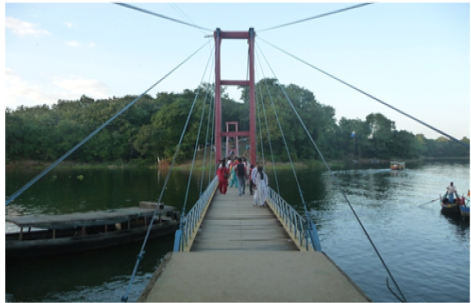

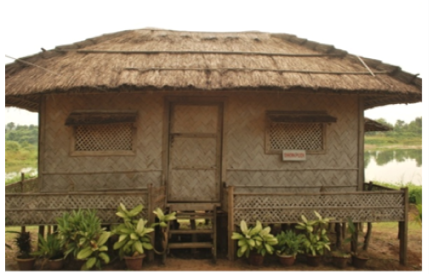
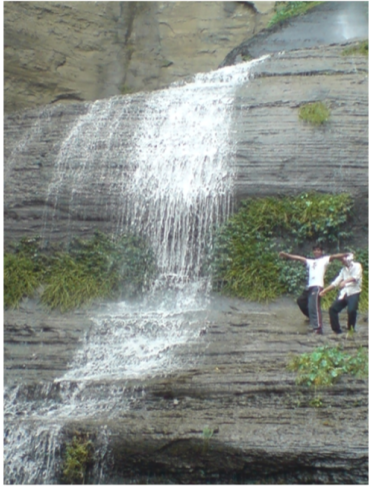
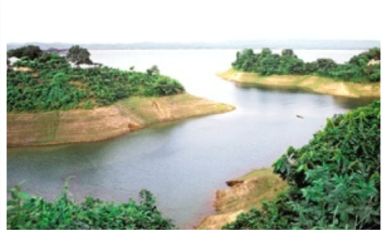
Fig : Kaptai Lake
Bandarban
Bandarban is definitely one of the more beautiful places to visit in Bangladesh. The best time to visit the area is during the winter, and it is definitely the season now. Bandarban is a mountainous area and the hills are quite steep. Bandarban town is a small place, but does have its own accommodation as well as shops. The resort at Bandarban is simply wonderfully maintained and is really affordable. The resort is situated on a hilltop and has a spectacular view. For the more adventurous traveller, leaving the resort for Ruma Bazaar by a Chaader Gari (Moon car) may be a better idea.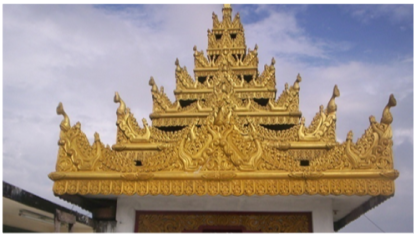
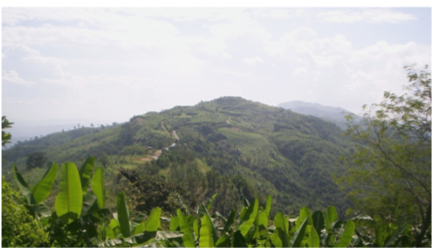
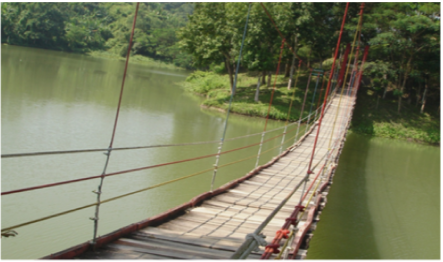
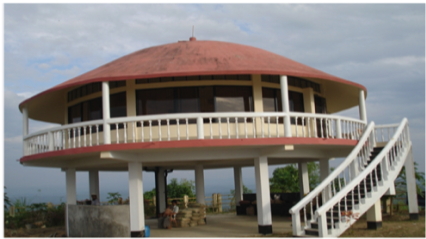
Khagrachari
Khagrachari is the district headquarters of Khagrachari hill district. Connected to Chittagong by a 92 km all-weather metalled road, Khagrachari is ringed by thick rain forests that shelter a wide variety of birds and animals. Here you can visit the tribal lifestyle of Chakmas’ in Khagrachari. You can also visit Alutila hill.Approximately 100 meters long a very dark Cave is the mysterious beauty of Alutila hill. For people seeking nature in a restful mood, Khagrachari is the place.
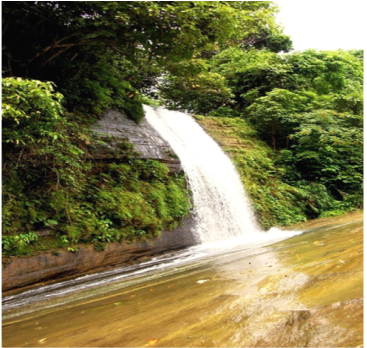

PROBLEMS OF ECO-TOURISM IN CHITTAGONG HILL TRACT
In Bangladesh there are many problems that affect eco-tourism development in Chittagong hill tract. The major problems of eco-tourism are summarized below:
Lack of primary knowledge about eco-tourism
Most of the visitors do not have any sound knowledge about eco-tourism. Tourist actions frequently harm the environment in many different ways. One of them is sound pollution. Different visitors like to enjoy music loudly, which can be greatly upsetting to the guest and serene forest environment.
Inadequate psychological knowledge
Inadequate knowledge about the psychological condition of the human beings involved in tourism industry due to insensibility of the tourism corporation. Its characteristics deserve due consideration.
Lack of analysis existing miserable situations
Govt. neither adequately analyze the existing miserable situation and nor take proper steps for its rectification.
Conflict between the tribal and other people
Mainly psychological conflict is another problem of the eco-tourism. Tribal and the aborigines specially living in the main tourist spot. But they are sufferings from psychological problem, due to underdevelopment eco-tourism.
Lack of sense of responsibility of people
It is a major problem to promote eco-system in Bangladesh. Local people do not have sense of responsibility about the eco-tourism.
Lack of public awareness
Eco-tourism can lead to the formation of tourism manners. But due to lack of public awareness about environment it has failed.
Lack of basic facilities
Eco-tourism has not yet developed due to lack of basic facilities like accommodation, transportation and safety, which are key factors in maintaining the eco-tourism industry in Chittagong hill tract.
Lack of publications on eco-tourism
There are no enough published materials and publications on eco-tourism in Chittagong hill tract like handbook, poster, leaflet etc.
Harmful impacts
Eco-tourism is enhancement friendly. But we do not consider the harmful impact of this enterprise. We only give importance of the gain and loss in the business but do not establish good relationship with them for better impact.
Threatened biodiversity
Biodiversity is threatened in Chittagong hill tract due to a shift from subsistence to a cash economy and increasing population. The threat to Chittagong hill tract biodiversity is serious but not irreparable.
Deforestation
Deforestation is the most important problem of eco-tourism. Cash-crop development, urbanization and small- holder farming sometimes led to deforestation in our country adversely affective eco-tourism.
Insufficient attention
For development of eco-tourism industry and its marketing has found to give insufficient attention to the possible significance of cultural and natural heritage in Bangladesh. Many rainforests, mangrove forests and other eco-systems are not utilized as tourist attraction in Bangladesh.
Policy problem
Bangladesh lacks a national policy on eco-tourism. Thus adversely affect the govt. and privet sector eco-tourism activities.
Destruction by tourists
Unaware and careless tourists can be the cause of destruction. Tourists, who unmindfully or without caring anything throw away their left-over food scraps and drinks, leave behind synthetic articles or tin or plastic containers cause damage to the local environment in our country.
Negative image about Biman
The role of our national airlines is very important to develop tourism sector. But Biman Bangladesh has failed due to the poor capacities in marketing, bookings, onboard, service, image, maintenance, entertainment on board, poor quality of its in flight magazine etc. Therefore, Biman Bangladesh is not only losing its foreign tour operators but also providing to its passengers negative impact about the country.
QUESTIONNAIRE DATA ANALYSIS
Table 02: Accommodation facility
| Accommodation facility | No of respondent | Percentage (%) |
| Poor | 25 | 50 |
| Medium | 15 | 30 |
| Well | 10 | 20 |
| Total | 50 | 100 |
Table 03: Entertainment facility
| Entertainment facility | No of respondent | Percentage (%) |
| Poor | 30 | 60 |
| Medium | 15 | 30 |
| Well | 05 | 10 |
| Total | 50 | 100 |
Table 04: Security Condition
| Security Condition | No of respondent | Percentage (%) |
| Poor | 25 | 40 |
| Medium | 17 | 34 |
| Well | 13 | 26 |
| Total | 50 | 100 |
Table 05: Communication System
| Communication System | No of respondent | Percentage (%) |
| Poor | 27 | 54 |
| Medium | 15 | 30 |
| Well | 08 | 16 |
| Total | 50 | 100 |
Table 06: Sanitation Facility
| Sanitation Facility | No of respondent | Percentage (%) |
| Poor | 10 | 20 |
| Medium | 23 | 46 |
| Well | 17 | 34 |
| Total | 50 | 100 |
46 % medium and 34% well. So this says that, the sanitation facility is medium.
Table 07: Visiting Purpose
| Visiting Purpose | No of respondent | Percentage (%) |
| Excursion | 25 | 50 |
| Entertainment | 20 | 40 |
| Business purpose | 02 | 04 |
| Visiting friends | 03 | 06 |
| Total | 50 | 100 |
Table 08: Mode of transportation have used by tourist
| Mode of transportation have used by tourist | No of respondent | Percentage (%) |
| Bus | 10 | 20 |
| Boat | 05 | 10 |
| Baby taxi | 15 | 30 |
| Micro bus | 20 | 40 |
| Total | 50 | 100 |
Table 09: Problems have faced by tourist at tourist spot
| Problems faced by tourist at tourist spot | No of respondent | Percentage (%) |
| Security | 13 | 26 |
| Crowed | 10 | 20 |
| Lack of entertainment facility | 20 | 40 |
| Drinking water | 07 | 14 |
| Total | 50 | 100 |
Table 10: Visiting Occasion
| Visiting Occasion | No of respondent | Percentage (%) |
| Vacation | 16 | 32 |
| Eid | 22 | 44 |
| Puja | 04 | 08 |
| National DAY | 08 | 16 |
| Total | 50 | 100 |
PERCEPTION OF TOUR OPERATORS
Table 11: Food facility demand by tourist
| Food facility demand by tourist | No of respondent | Percentage (%) |
| Chinese | 0 | 0 |
| Fast food | 2 | 40 |
| Local | 3 | 60 |
| Total | 5 | 100 |
Table 12: Entertainment facility demand by tourist
| Entertainment facility demand by tourist | No of respondent | Percentage (%) |
| Children park | 2 | 40 |
| Traditional function | 2 | 40 |
| Speed boat | 1 | 20 |
| Total | 5 | 100 |
Table 13: Accommodation facility demand by tourist
| Accommodation facility demand by tourist | No of respondent | Percentage (%) |
| A.C. Room | 2 | 40 |
| Non-A.C. Room | 1 | 20 |
| Traditional tribal house | 2 | 40 |
| Total | 5 | 100 |
Table 14: Tourist season
| Tourist season | No of respondent | Percentage (%) |
| Sep-October | 1 | 20 |
| Nov-December | 3 | 60 |
| Jan-February | 1 | 20 |
| Total | 5 | 100 |
Table 15: Number of tourist comes in a season
| Number of tourist comes in a season | No of respondent | Percentage (%) |
| 50,000 | 0 | 0 |
| 100000 | 2 | 40 |
| More than 250,000 | 3 | 60 |
| Total | 5 | 100 |
Table 16: Types of tourist Class
| Types of tourist class | No of respondent | Percentage (%) |
| Rich | 1 | 20 |
| Middle class | 2 | 40 |
| Lower class | 2 | 40 |
| Total | 5 | 100 |
Table 17: Problems of tourist spots
| Problems of tourist spots | No of respondent | Percentage (%) |
| Electricity | 1 | 20 |
| Drinking water | 1 | 20 |
| Lack of entertainment facility | 3 | 60 |
| Total | 5 | 100 |
PROSPECTS OF ECO-TOURISM IN CHITTAGONG HILL TRACT
1. We have bright future and prospects of eco-tourism development in Chittagong hill tract. Although, unknown too many prospective tourists across the globe, Chittagong hill tract geographical diversity provides it fairly rich in flora and fauna. There are many of identified plants and species of which sizable number are flowering plants over thousand birds, thousands of insects, hundreds of amphibians and reptiles, many worms and several hundred mammals found in Chittagong hill tract. The co-existence of man and nature can best be studied in Chittagong hill tract, which provides a great emotional and educational experience to the visitor. Bangladesh can also offer a variety of nature such as open-air jeeps, elephants, boats, bicycles, cycle rickshaws, from atop a machan or watch tower and of course, walking.
2. The study has found that Eco-tourism in Chittagong hill tracts suffers from a poor image; eco-tourism potential on the contrary is rated high. Now it is in a very early but promising at stage of development. Experts are unanimous that Bangladesh has great potentials for the development of tourism in general and eco-tourism in particular.
3. The Government of Bangladesh announced a National Tourism Policy in 1992. The policy acts as a guideline for the overall development of the tourism industry in the country. Public and private sectors could play their respective roles for its promotion, earning of foreign exchange and creation of job opportunities.
4. A strategic Master Plan has also been formulated by World Tourism Organization with the assistance of UNDP for integrated development of tourism in the country. Steps have been taken to develop tourism infrastructure in phases as per the recommendations of the Master Plan, which include creation of tourism facilities at various places. It is expected that the whole country will come under a tourism network. Therefore, both public and private sectors concerted efforts are necessary to development and utilization of the potentials of the industry.
5. Chittagong hill tract is known to all of the country that, it has bright future and prospect of eco-tourism development in Bangladesh. So if we develop the eco-tourism management plan properly by private public initiator in Chittagong hill tract, we can create the potential job opportunities and will be earn a huge foreign exchange.
PEOPLE INVOLVED IN ECO-TOURISM
Humans are part of the eco systems that eco-tourism seeks to protect. Eco-tourism is not only a means for visitors, governments and scientists to conserve protector areas, but also recognizes that local communities are stakeholder in the eco-tourism process and its success and failure. Different group of people involved in Eco-tourism in Bangladesh to protect eco-system. They are:
Local inhabitants
Local inhabitants are the most important group to enhance the eco-tourism. Eco-tourism focuses on local cultures and wilderness adventures. Local cultural heritage is the primary attraction of the eco-tourism. Eco-tourism includes programs that minimize the adverse effects of traditional tourism on the natural environment and enhance the cultural integrity of local people. As a result, eco-tourism is an integral part for the local inhabitants to the creation of economic opportunities.
Hotels, Motels & their employee
Another group involved in eco-tourism activities is the owners of hotels, motels, resorts and privet guest house and their officers & workers. This group of people involved in the tourism industry need to make good relation with tourist for better impact. With a view to making the tourism industry more popular and viable co-operation and supports from all sides are necessary.
Tour operators
Various Govt. and private tour operators are actively involved to established eco-tourism in different spots in Bangladesh. BPC is one of them tour operator. Other privet tour operators are the Guide Tour Ltd. Unique Tour and Travel, Overseas Tour Operators, Airlines, Travel Agencies, Hotels and Motels etc. Bangladesh Tourist Corporation developed eco-tourism in the Sundarban, which is one of the top priorities of Forest Department and the SBCP (Sundarban Biodiversity Conservation Project).
Drivers and helpers of local buses and cars
Responsible travel to natural areas that conserves the environment and improves the well being of local people. It means that those who implement and participate in Eco-tourism activities. Therefore, drivers of local buses, cars are closely related with tourism and its development.
Artists: cultural and Drama etc
Many artists of cultural and drama organization have been involved in developing eco-tourism policies. Cultural conservatism and preservation are related to Eco-tourism, in which, people concerned and related with cultural and drama are activity perform their work so as to enhance attraction of tourists.
Local leaders, NGOs workers and Youth
They are supporting partners to eco-tourism and highly involve providing services to the local and foreign tourists.
Reporters of the newspapers and Electronic media
Reporters of the newspapers and Electronic media are working for environmental awareness and education of all stakeholders for the enjoyment of nature for international and domestic visitors.
CONCLUSION
Eco-tourism recognizes the idea of the local community’s involvement preservation of nature. Eco tourism has the potential not only provide quality employment, income generation and business opportunities for local people, but also to acts a catalyst for the preservation of natural environment and indigenous or tribal cultures. Though there are many problems remaining in eco-tourism in Chittagong hill tract, there are also remaining some possibilities of this sector.
FINDINGS
Eco-Tourism means making as little environmental impact as possible and helping to sustain the indigenous populace, thereby encouraging the preservation of wild life and habitats when visiting a place. This is responsible form of tourism and tourism development, which encourages going back to natural products in every aspect of life. It is also the key to sustainable ecological development. In fact some national and international researcher and research organizations make examined Eco-Tourism from their point of views. The findings after this research are-
Problems loaded with managerial confinements lead to the distraction of tourist spots,
Lack of communicable system, extensive effort from the governmental bodies as well as lack of secured investment by corporate tourist organizations results in the fragile tourist system,Presence of alienation between the tourist system and the local inhabitants puts the possibilities of vibrant tourist at stake.
Specific emphasizes on few familiar tourist spots with aggravated sense of artificial naturalness destroys the authenticity of nature and thus makes the ecosystem vulnerable,
Media related pieces of information often leads to the discouragement of the tourist.
RECOMMENDATIONS
Eco-tourism is becoming an increasingly popular expression of the awareness about environment. It is now one of the post popular concepts in the tourism industry, throughout the world in the environmental sectors. In fact, tourism is now the largest industry of the world. It can be noted here that eco-tourism is a fastest growing segment. We need to take proper steps that may help to overcome or minimize the problems leading to growth and development of eco-tourism for betterment of the country. The recommendations are as follows:
Generate greater awareness
It is necessary that we generate greater awareness among public authorities and the private sector regarding eco- tourisms capacity to contribute to the conservation of the natural and cultural heritage, which will affect tourists and help the improvement of standard of living of the people of those areas.
Disseminate eco- tourisms method
To protect eco-systems we should disseminate methods and techniques for the planning, management, regulation and monitoring of eco-tourism to guarantee its long-term sustainability.
Increase marketing opportunity
Our authority should increase opportunities for the efficient marketing and promotion of eco-tourism destinations and products on international markets.
Capture global tourism market
The aim of the eco-tourism development in our country should be capture a portion of the huge global tourism market by attracting visitors to natural beauty spots and using the revenues, to fund local conservation and fuel economic development.
Publish necessary handbooks
The authority should publish necessary hand books and related materials and distribute the same to the concerned following levels of people for their awareness and conscientization building without delay: i) local people and tribal and primitive or native inhabitant’s society. ii) National and international tourists. iii) Group of people involved in tourism industry.
Publicity about eco-tourism through media
Different information about eco-tourism should be arranged for publicizing in the daily news papers and broad casting the same through media like radio, T.V. etc for enhancing public awareness.
Education and training
Education and training are most important factors that enhancing the links between biodiversity conservation planning and tourism. Hotels, motels, restaurants and tour operators should be provided with various training programs among their staff at every level.
Development infrastructure facilities
The government of Bangladesh and the BPC need to understand that eco-tourism is an industry. It is the fastest growing industry in the world and would provide the country with big amount of foreign currencies. So, it needs a ground to create and develop eco-tourism, which is based on understanding the need of eco-tourism and create a safe and sanc environment. The tourist should be given easy and cheaper visa facilities, safe water, food and security, infrastructure comforts, emergency managements, availability of basic amenities and communication. Therefore, infrastructure development is most required element for expansion of eco-tourism facilities to the tourists. For a good infrastructure the role of airlines, good accommodation, recreation etc cannot be over emphasized.
Exhibitions
These may be arranged to project eco-tourism potentials of our country: to established linkage for the growth of inbound, to bring together travel related agencies, BPC, airlines, hotels, motels, tour operators, credit card companies, cargo and air express companies etc to facilitate exchange of information and ideas among the partners in travel trade.
Need investment by private entrepreneurs
To develop eco-tourism we need more investment by the private entrepreneurs. We expect that private entrepreneurs might come forward to invest in the tourism sector. However, private entrepreneurs have to be provided with necessary facilities and infrastructures and for that there is need of implementation of some develop projects.
Improve moral obligation
We should improve our moral obligations for loving the nature and be friendly environment. The interaction of tourism and biodiversity conservation should be known at different schools level along with technical, university, where tourism is taught.
Incentives offer by the Government
The Government should offer incentives and allot necessary land to encourage private entrepreneurs in establishing enough accommodation along with restaurant facilities in the tourist areas. The private sector will definitely need initial financial assistance from the govt. or some outside source.
Form Eco-Tourism Council
The Government of Bangladesh should form Eco-Tourism Council. It is essential to coordinate different ministerial function to promote eco-tourism in our country.
Expand National Hotel and Tourism Training Institute (NHTTI) activities
The activities of the National Hotel and Tourism Training Institute (NHTTI) should be expanded all over the country. The NHTTI will provide skill to concerned personnel through local and foreign training. Moreover, the training institution can also provide formal and informal training for youth workers, tourism industry workers, tourism guides, and transport workers in the tourism business.
Building positive image of Bangladesh Biman
Bangladesh Biman difficulties need to be overcome. We should ensure good quality of services, on board; ensure maintenance& entertainment on board etc. As a promotional measure airlines could offer cheaper tickets and packages for tourist. Obviously something can be done to promote the tourism of Bangladesh in collaboration with the hotel, airlines, and tour operators at international level. It is opined that Bangladesh whose image aboard is at lowest ebb as the poorest country in the world and prone to natural calamities like flood and cyclone. Bangladesh government need to take effort to dispel the image and depict that Bangladesh really is the country with unspoiled natural beauty and a charm that comes from friendly and hospitable people.
Organizing workshops and seminars
We need holding workshops, seminars and discussion with the people of different levels, irrespective of caste, creeds religion race and political affiliation to protect our nature.
CONCLUSION
Bangladesh has potentials for growth of eco-tourism. Its geographical location down the highest mountain peak- Everest has made our country a subject of interest of people in the world. With the ecological and environmental interests today, ecological themes and aspects are growing more and more popular in tourism. We have land mass is crossed by major rivers and natural lakes. The Mangrove forest- Sundarbans is a major object of interest for local and foreign tourists. Three hill districts are very interesting for local and foreign tourist. Eco-Tourism can change the unequal relationships of conventional tourism. So if we develop the eco-tourism management plan properly by private public initiator in Chittagong hill tract, we can create the potential job opportunities and will be earn a huge foreign exchange.
Some are parts:
Development of Eco Tourism in Chittagong Hill Tracts Problems and Prospects (Part 1)
Development of Eco Tourism in Chittagong Hill Tracts Problems and Prospects (Part 2)
